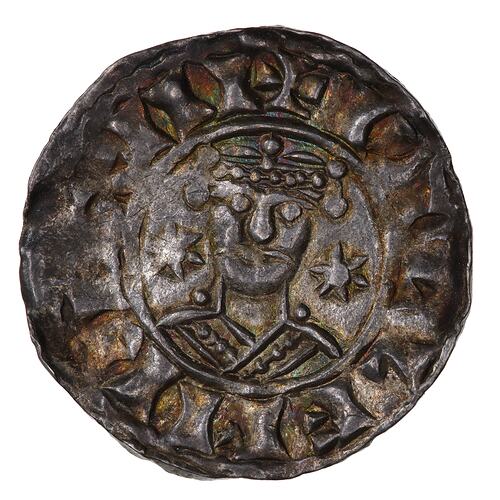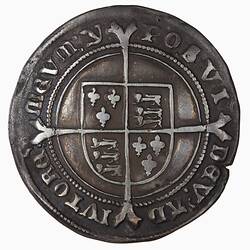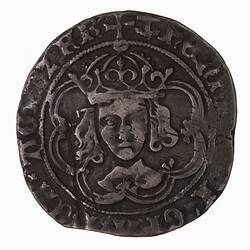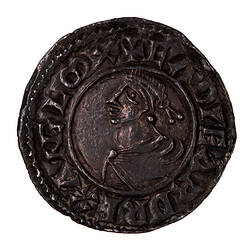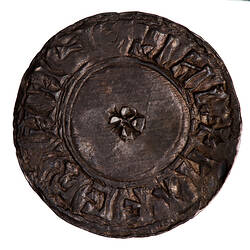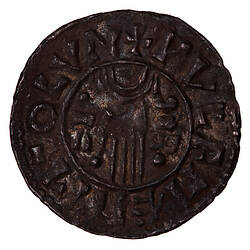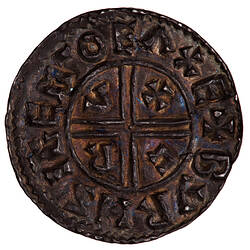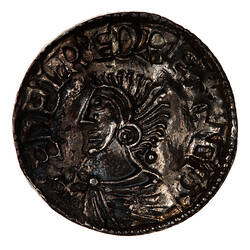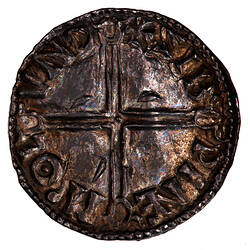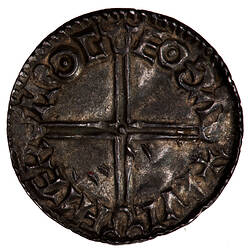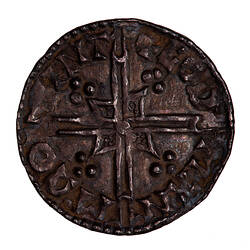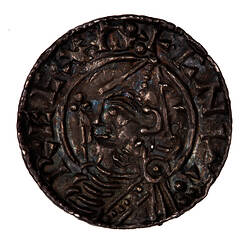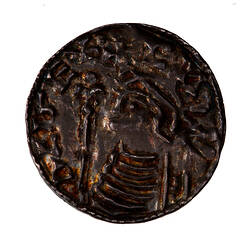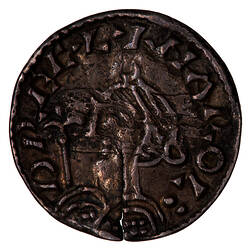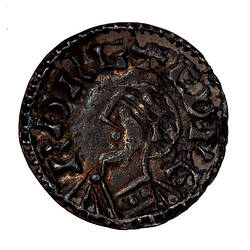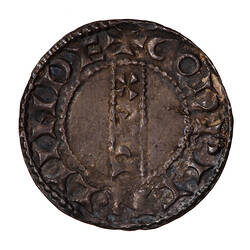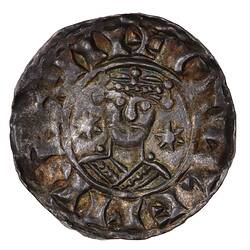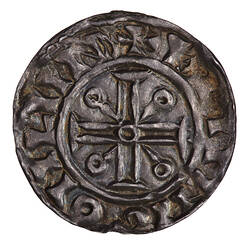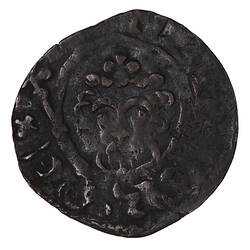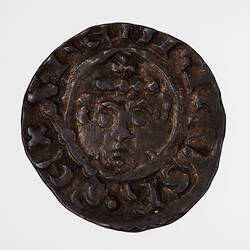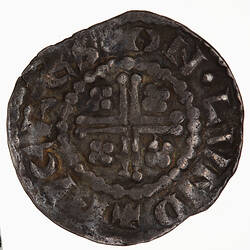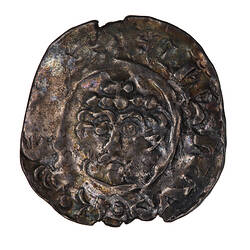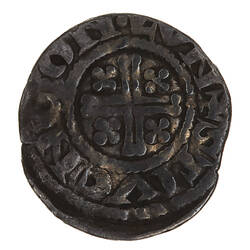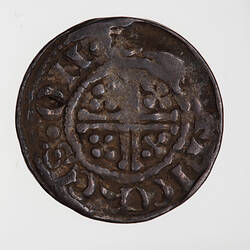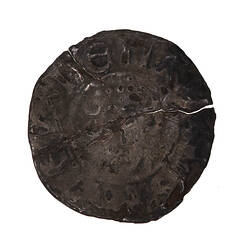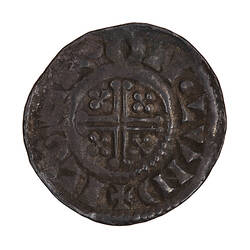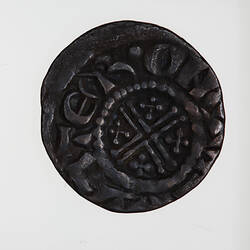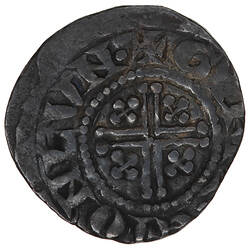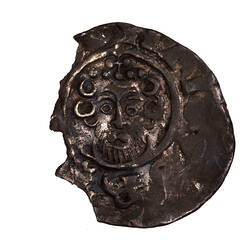The Roman Empire had a mint in London from about AD 287 until about 337, but for most of the period of Roman control Britain was supplied with its coinage requirements from Europe. The end of Roman rule saw an end to the regular circulation of coins.
The establishment of the various Anglo-Saxon kingdoms saw a gradual return to coinage. As the kingdoms joined into one, so the coinage, which was almost solely of the silver penny, became uniform. In 928 King Aethelstan ordered that there would be a single coinage for all of England to be struck from a number of official mints, the largest of which was to be London. Even after the Norman Conquest in 1066 there were many mints producing the coins and many changes of design. Both of these matters were related to the profit that was made in turning bullion into coin.
Although there had been a brief period when English coins were small and thick, closely related to coin issues in the Netherlands, it was the thin broad silver penny that was to be the principle coin. Its origins are traced to an issue of the novus denarius by Pepin the Short in France in about AD 755. The thin fabric of the coins is thought to be influenced by then current Arabic coins.
The production of the penny at the mint was under the control of a moneyer, whose name was in the early period stamped on the reverse of each piece. The moneyer was responsible for the accurate weight of each penny, 240 to be struck from each pound of silver and for the quality of the silver. From each pound of pure silver coined 7.5% was for the king, its weight being replaced by copper so that the pound remained a pound and the resultant alloy was .925 fine.
To strike the coins, firstly the silver was melted and poured onto a slab to cool. It was then beaten with a hammer to the required thickness and cut into roughly circular shape of the correct weight. This piece was then placed on a fixed lower die, engraved with the King's portrait and titles, an upper die, engraved normally with a cross and the name of the mint and moneyer was placed on top and then the top of the upper die was struck with a large hammer. The new coin received both obverse and reverse design at the one time. This basic system of striking coins remained in use at the Royal Mint until 1662 (excluding some failed experimentation in the 16th century).
With the passage of time the role of the moneyer changed, originally they may even have engraved their own dies but eventually they became wealthy men who hired the mint workforce. This became necessary as the need for coinage became greater and greater. The need to exchange foreign coins (brought into the country through trade) for English coins led to the mint having an exchange section; in 1192 a Warden was appointed to oversee this practice and to ensure that the King received his due.
References
The Royal Mint, An Outline History, London 1977
Dyer, G.P. Royal Sovereign 1489-1989, Royal Mint Publications, London 1989
Cooper, Denis R. The Art and Craft of Coinmaking, Spink & Sons, London, 1988
Challis, C. E., A New History of The Royal Mint, Cambridge University Press, 1992 http://www.royalmint.com/Corporate/History/TheRoyalMint/llantrisant.aspx
More Information
-
Keywords
-
Authors
-
Article types
